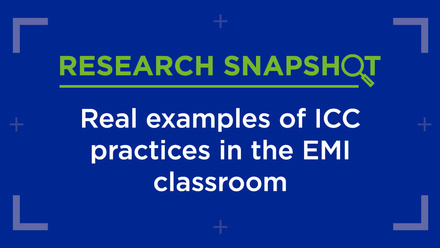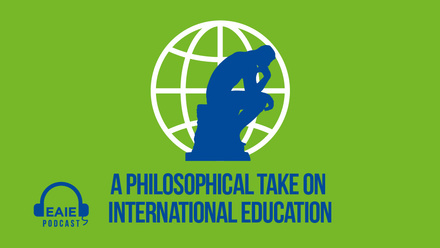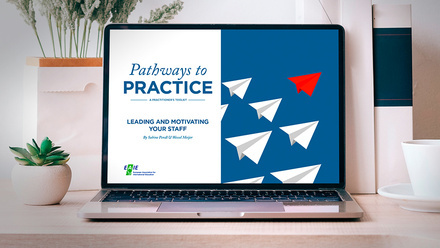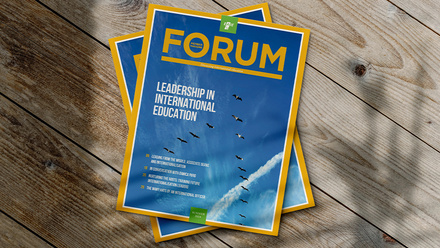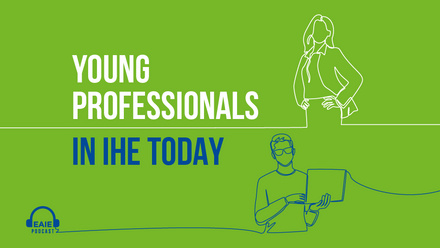How to make your blended staff trainings a success

ERASMUS+ staff training has long been an opportunity for academic and non-academic staff members to strengthen or develop professional competences in an international context. It provides mobility experiences also for colleagues working in offices further removed from internationalisation endeavours, motivates foreign language learning and enhances Internationalisation at Home at the hosting institution. Their particular appeal for participants lies in an immersive experience abroad and the possibility of reflecting on established practices in dialogue with colleagues from other cultural and institutional contexts. Depending on the topic however, the staff training may benefit from a more intensive collaborative format that is supported by virtual preparatory (and follow-up) meetings to positively influence the group dynamic before participants even arrive. Such a scenario is ideal for an ERASMUS+ Blended Intensive Programme (BIP).
In addition to the funding opportunities offered by E+ BIPs, they are an opportunity to bring the best of two worlds – the virtual and the physical – together, as an on-site phase is combined with an online component. While they are gaining increasing relevance as international learning experiences for students, their potential for staff training is yet to be further explored. In this blog, we share lessons learnt from a staff training that we conducted as an E+ BIP, thereby shifting the perspective from educational advisors supporting the implementation of blended mobility in our institution to facilitating one ourselves.
Our context
In the context of the European University alliance ENLIGHT, we hosted the first iteration of our 'ENLIGHT Incubator Week' this spring, a networking and training format that should foster partnerships for future cooperation in curriculum internationalisation (CI).
In group work, the participants were continuously guided towards the design of an action plan for a jointly developed international learning activity.
We invited academics, especially study programme coordinators, programme directors, deans of studies and their employees, and lecturers, as well as support staff responsible for curriculum internationalisation, educational development or strategic internationalisation to jointly explore the CI process and initiate collaborations with peers from different ENLIGHT partner universities. To allow for fruitful transdisciplinary exchange as well as programme-specific networking and discussions, we invited six chosen study areas to nominate interested colleagues. This resulted in a productive mix of perspectives.
We offered match-making opportunities at a programme-level around the different thematic clusters to inspire in-depth collaboration in education across the alliance, but also mediated input on curriculum development with a focus on IoC/IaH and internationalisation modalities. In group work, the participants were continuously guided towards the design of an action plan for a jointly developed international learning activity. As such, these collaborations could be kick-started with a concrete educational initiative, such as a virtual exchange course, an E+ Blended Intensive Programme, a mobility window for virtual course participation, a physical mobility programme or a micro-credential. A session on community-building to foster (inter)institutional alliances that would help nurture the individual projects complemented the programme.
How to kick-start your own blended matchmaking and training events
Make sure you have the right colleagues on-site
"Whoever comes, they are the right people" – meaning those who have decided to spend their time on a workshop topic are also the right people to work on this topic – is a basic assumption that benefits many training contexts. Indeed, our on-site workshops immensely benefited from different levels of expertise in the field of internationalisation and even more so from different assumptions of what internationalisation in education should be about. However, this mantra is a bit more difficult to maintain in the context of a programme that builds on matchmaking for future cooperation.
Make sure that you carefully orchestrate matchmaking processes so that your participants will be able to meet with peers and have productive conversations. We were especially successful in addressing new study programmes or programmes under revision, since this meant that at least one partner in the cluster had more freedom in the further development of the curriculum. In our case, optional virtual preparation sessions on the cluster-level proved to be a good way to explore common interests. Moreover, participants without formal leadership responsibilities need to be carefully briefed in their respective institutions. Carefully craft information material about the content of the programme and its aims that institutional liaisons can share in their local context.
Make good use of the online phase
We kicked-off our collaboration with an online phase that asked participants to introduce themselves to each other in an asynchronous manner via a Padlet Board and used time spent synchronously three weeks before the on-site phase for further ice-breaking as well as an introduction to the topic and to clarify expectations.
For their preparation, participants received four reflection questions that were meant to help them clarify their role and their goals during the on-site week. However, most participants were so occupied with travel planning and regular work that this was somewhat forgotten and needed more support from our organisational side. For future iterations, we suggest that the online phase is used to also build a common understanding of the network, as not all participants were equally familiar with the alliance.
While one project team may be drafting the syllabus for their joint course, another may need an in-depth conversation about their respective disciplinary cultures or teaching styles.
Group dynamics and intercultural learning are key
In E+ BIPs, students experience an intensive intercultural encounter that needs to be supported through an ice-breaker phase and, ideally, continuous reflection. In this staff training format, ice-breaking moments were highly significant for the group. We advise a progression from low-threshold sharing in the virtual space, to prompts that allow them to share more about themselves as the on-site week progresses. In particular, a 'Manual of Me' received very positive feedback from participants.
Make sure to give space for unstructured group work where the project teams can have the kinds of conversations that they need at this very moment: While one project team may be drafting the syllabus for their joint course, another may need an in-depth conversation about their respective disciplinary cultures or teaching styles.
And, of course, finding a balance between input, group work and social activities is not to be under-estimated, since collaboration requires trust and time.
Ensure the 'after-life' of all collaborations
To ensure that ideas regarding future collaborations would not 'die' with the end of the incubator week, we planned online follow-up meetings that included the participants from specific clusters, but also colleagues from other partners if desired (e.g. a third partner for the development of a BIP if only colleagues from two universities participated in the Incubator Week) and some of their local stakeholders. Such virtual follow-ups allow you to see where the collaboration is heading, but also inform and engage local support staff and embed the bottom-up collaborations that have been sparked in the broader institutional ecosystems.
Finally, the requirement for the on-site phase to last at least five days – something that Erasmus+ BIP funding demands – proved challenging for some of the participants. It was difficult for some colleagues to be out of the office for a full week during the semester. Following from this, our evaluation of the initiative showed that some participants would have wished for a shorter duration that would have been easier to accommodate in their work schedules; on the other hand, none of the on-site programme components were seen as redundant and participants cherished the time they had on-site to develop a good collegial relationship or even friendship over their group work. The evaluation showed very clearly that a similar experience would not have been possible in a virtual or shorter format.

